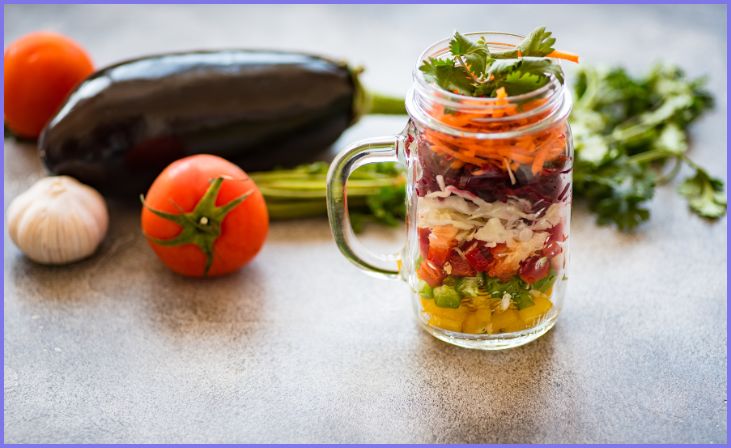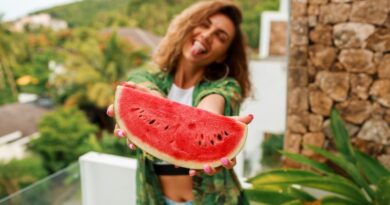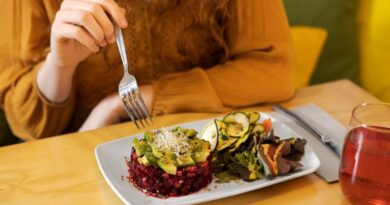How to Make Probiotic-Rich Fermented Salsa at Home – Incorporating probiotic-rich foods into your diet is a key aspect of promoting gut health, and homemade fermented salsa offers a delicious and nutritious way to achieve this. Fermentation not only enhances the flavors of your favorite salsa ingredients but also introduces beneficial probiotics that contribute to a well-balanced digestive system.
This simple yet flavorful recipe combines fresh vegetables with a probiotic culture starter or whey, creating a vibrant and tangy salsa that’s rich in beneficial bacteria. By following this guide, you’ll not only indulge in a tasty condiment but also harness the potential benefits of probiotics for your overall well-being. Get ready to embark on a culinary journey that not only tantalizes your taste buds but also supports your digestive health.
Explanation of probiotics and their benefits
Probiotics are live microorganisms, primarily bacteria and yeast, that confer health benefits when consumed in adequate amounts. Found in various fermented foods and dietary supplements, these “friendly” bacteria play a crucial role in maintaining a balanced and healthy microbiome—the diverse community of microorganisms residing in the digestive tract.
The benefits of probiotics are multifaceted:
- Gut Health: Probiotics contribute to a balanced gut microbiome, aiding in digestion and nutrient absorption. They also help maintain a healthy intestinal lining, preventing the overgrowth of harmful bacteria.
- Immune System Support: A significant portion of the immune system resides in the gut. Probiotics play a role in supporting immune function and responsiveness, potentially reducing the risk of infections.
- Mental Health: The gut-brain connection is a burgeoning area of research. Probiotics may influence brain function and mood through the gut-brain axis, potentially contributing to mental well-being.
- Inflammation Regulation: Probiotics can modulate inflammation in the body, helping to manage inflammatory responses and potentially reducing the risk of chronic inflammatory conditions.
- Digestive Disorders: Probiotics have been studied for their effectiveness in managing conditions such as irritable bowel syndrome (IBS), inflammatory bowel diseases (IBD), and diarrhea.
Also, Read – Deliciously Cheesy Veggie Side Dishes
Prepare Vegetables

Dice 4 tomatoes, finely chop 1 large onion, and cut 2 bell peppers into small pieces. Mince 2-3 cloves of garlic and finely chop 1-2 jalapeño peppers. Chop a bunch of fresh cilantro. In a large bowl, combine tomatoes, onion, bell peppers, garlic, jalapeños, and cilantro. Add 1 teaspoon cumin powder, 1 teaspoon non-iodized sea salt, and juice of 2 limes. Mix thoroughly.
Combine Ingredients

In a large bowl, combine diced tomatoes, finely chopped onion, bell peppers, minced garlic, chopped jalapeños, and fresh cilantro. Add cumin powder, non-iodized sea salt (1 tsp), and lime juice (from 2 limes). Mix the ingredients thoroughly. Optionally, dissolve 1 tsp of sugar or honey in warm water and add it to the mixture to aid fermentation.
Pack into Jar

Transfer the mixed ingredients into a clean quart-sized glass jar. Press the mixture down with a spoon to eliminate air pockets. If using a sweetener, ensure it’s evenly distributed.
Place a small, clean jar filled with water or a plastic bag filled with water on top of the salsa mixture as a weight, keeping the vegetables submerged in their juices. Cover the jar with a piece of cheesecloth or a coffee filter, securing it with a rubber band or string.
Add Optional Sweetener

If desired, dissolve 1 teaspoon of sugar or honey in a little warm water. Add this sweetened water to the salsa mixture, ensuring an even distribution. The optional sweetener not only adds flavor but also provides a source of food for the beneficial bacteria during the fermentation process. This step can help kickstart fermentation. Adjust the quantity of sweetener based on your preference for sweetness.
Use a Weight

Place a small, clean jar filled with water or a plastic bag filled with water on top of the salsa mixture as a weight. This weight helps keep the vegetables submerged in their own juices, creating an anaerobic environment ideal for fermentation.
Ensure that the weight is clean and fits well inside the fermentation jar. Check daily to maintain proper submersion, allowing the fermentation process to occur uniformly.
Cover with Cloth

Cover the jar with a piece of cheesecloth or a coffee filter, securing it with a rubber band or string. This allows air to flow into the jar while preventing dust and debris from contaminating the salsa.
The cloth covering promotes a controlled fermentation environment. Ensure that the cloth is clean and securely fastened to protect the salsa during the fermentation period. Periodically check the cover to ensure it stays in place and remains clean.
Also, Read – Best Types of Fish to Eat
Fermentation

Place the jar in a cool, dark area with a temperature between 65-75°F (18-24°C). Allow the salsa to ferment for 3-7 days, checking daily to ensure vegetables stay submerged. Taste the salsa after a few days to gauge the level of fermentation. The duration may vary based on your desired taste and room temperature.
Fermentation enhances flavors and promotes the growth of beneficial bacteria. Adjust the fermentation time to suit your preference. Once satisfied, remove the weight and cover the jar with a tight-fitting lid before storing it in the refrigerator to slow down the fermentation process.
Store in the Fridge

After reaching your preferred level of fermentation, remove the weight and cover the jar with a tight-fitting lid. Transfer the jar to the refrigerator to slow down the fermentation process. This step helps maintain the salsa’s flavor and texture while extending its shelf life.
Refrigerate the fermented salsa for long-term storage. The chilled environment inhibits further fermentation. Enjoy the probiotic-rich salsa as a flavorful condiment or accompaniment to your favorite dishes. Remember to use clean utensils when serving to prevent contamination.
Enjoy
Your probiotic-rich fermented salsa is ready to enjoy! Serve it with chips, tacos, or as a flavorful condiment. The fermentation process enhances the salsa’s taste, and the beneficial bacteria contribute to gut health. Experiment with the fermentation time to achieve your preferred flavor profile.
Share and savor this homemade treat, knowing you’ve crafted a nutritious and delicious addition to your meals. Keep any remaining salsa refrigerated for optimal freshness. Enjoy the unique, tangy flavors and the added nutritional benefits of homemade fermented salsa.
Conclusion
In conclusion, crafting your own probiotic-rich fermented salsa not only tantalizes your taste buds but also nurtures your gut health. By embracing the benefits of homemade fermentation, you empower your digestive system with a diverse array of beneficial bacteria.
This flavorful journey goes beyond culinary delight, offering a simple yet impactful way to support your overall well-being. Make fermented salsa a regular addition to your diet, and savor the delicious intersection of taste and health in every bite. Cheers to a thriving gut and a vibrant culinary experience!
FAQs
It’s recommended to start with fresh, unprocessed vegetables to ensure a vibrant mix of probiotics. Store-bought salsa may contain preservatives that can interfere with the fermentation process.
Taste your salsa periodically. The flavor should develop tanginess, and the texture should slightly soften. Fermentation times vary, but 2-7 days at room temperature is a typical range.
Mold is uncommon but if spotted, discard the entire batch. Ensure proper hygiene, use clean utensils, and maintain an airtight seal to prevent contamination.







